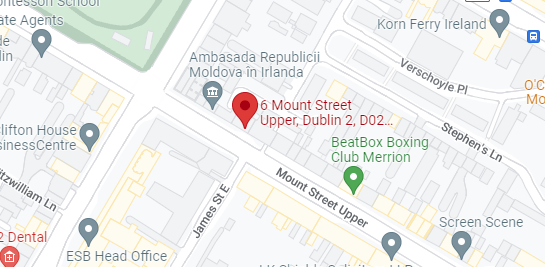Financial integrity is one of the major concerns in the construction industry and will probably not have been allayed any by news that a record £1m was paid out every day by trade credit insurers during the second quarter of 2018. The decision of HH Judge Russen QC of 24 September 2018 in Birch (a partnership) v Lloyd and another considers whether those who have operated impecunious companies, whether openly or “in the shadows”, can incur direct tortious liability to creditors. It will be of interest both to those controlling companies in financial difficulty and those who find themselves engaged with such companies.
Background
Palmer Birch Partnership (“PB”) was retained by Hillersdon House Limited (“HHL”) as contractor for the refurbishment of Hillersdon House, a 14-bedroom home set in 200 Devon acres. HHL’s sole shareholder and director was Christopher Lloyd (“C”) and the house was the home of C’s brother, Michael Lloyd (“M”). HHL had no substantive assets and was funded both directly and indirectly by M through loans of some £6m. HHL took a 21 year lease of the House from Seizar Holdings Limited (SLL), of which M was beneficial owner. The lease contained a forfeiture provision in the event of HHL’s insolvency or non-payment of rent. The Court found that the arrangement
“ensured that Michael’s further, post-acquisition investment in Hillersdon House was not truly at risk by virtue of the fact that it had been channelled through a limited company that very arguably was never solvent during its short life”
and that
“HHL never came close to running any business and it can in hindsight be seen to have been nothing more than a conduit for the receipt of funding provided or arranged by Michael and substantial VAT reclaims that would not have been available to him or SHL.”
That said. it had already been established in a previous hearing that there was nothing “unlawful” in the arrangement itself.
M took partial possession in December 2014 pre-practical completion but the project had already run into serious difficulty. PB had sought a substantial EOT for late design information and variations and suspended the works in January 2015 for non-payment of invoices of 15 December 2014 and 20 January 2015. In April 2015, HHL terminated the contract asserting that no third party was willing to lend it further funds and that it would have to be liquidated, which in fact occurred in June 2015. As it had no right to terminate based on its own financial difficulty, this amounted to repudiatory breach. PB left site and the works were completed by Country Sporting Experience Limited (“CSEL”) whose director and shareholder was M. In the meantime, HHL’s forfeiture meant that the £8 million value of the property and works previously appearing in its accounts was reduced to zero.
Economic Tort Claims Pursued by PB
Inducement of HHL’S Breach of Contract (Alleged Against M)
This required breach of contract by HHL (which was not in doubt) but as to any secondary liability, the Court recognised a very fine divide between actual inducement or procurement and “mere prevention” and referred to a “potentially significant distinction between the deprivation of funding to the contract-breaker and the dissipation of assets, or funds, from that party”. The latter may ground liability.
There is also a defence of justification to inducement which will arise where the alleged tortfeasor is actually exercising a separate “equal or superior” contractual right, such as one which pre-dates the relevant contract.
Unlawful Interference (interference with a trade or business by unlawful means) Alleged Against M
This is a tort of primary liability not reliant on any breach by HHL. The requirements are:
- unlawful acts used against, and independently actionable by a third party;
- interference with the actions of the third party in which the claimant has an economic interest;
- intention to cause loss to the claimant by the use of unlawful means; and
- loss in fact caused to the claimant.
Unlawful Means Conspiracy Alleged Against C and M
Again this is a tort of primary liability. The requirements are:
- an agreement/arrangement between a defendant and one or more other parties;
- an intention to injure the claimant which need not necessarily “be the defendant’s predominant purpose”;
- unlawful acts carried out pursuant to the arrangement/agreement as a means of injuring the claimant (which can include breach of contract itself); and
- loss to the claimant suffered as a consequence of those acts.
Findings and Decision
The Court found that M’s witness statement in which he stated “I acted as an agent and adviser to HHL and my brother in construction works … But at all times Christopher was in charge of HHL as a business” was “simply irreconcilable with the wealth of contemporaneous documentary evidence. “
Inducement
In response to allegations of secondary liability, M asserted “there was nothing unlawful in the “failure” of Michael or SHL to fund the Contract to its completion” and the Judge agreed that “inducement tort is not committed simply through a suggested failure on the part of the defendant to feed the coffers of a limited liability company, to enable it to meet its contractual obligations, when in fact there is no legal obligation to do so.”
On the facts it was found that M did not instruct HHL not to pay PB with monies it did have prior to liquidation but which it paid to others instead. Moreover, as HHL simply did not have enough money to discharge PB’s outstanding invoices, this fact alone was the cause of HHL’s breach; however, in April 2015 M had advised his bank which, was also funding the project, that he had earmarked for HHL further monies he was due to receive which actually arrived before the liquidation on 25 June 2015 but were then funnelled through CSEL, not HHL, for completion of the project. In those circumstances, the Court found that the liquidation was used by M as a “negotiating lever” and was “a purely tactical manoeuvre”.
The Court remarked that “prevention and inducement turns upon the ability to categorise Michael’s actions as a diversion of funds away from HHL” and found that M “did cross the line from prevention to inducement. And he did so by purporting to speak for HHL as if he was the Client under the Contract. This is not, therefore, a case where the alleged inducer can say that the breach would in any event have taken place without any inducement on his part.” On the facts, therefore, it was found that M did “ procure HHL’s repudiatory breach of the Contract and thereby committed the inducement tort “.
Further, M’s defence of “justification” failed as he was found to have been “motivated by nothing more than commercial (and property-based) self-interest … illustrated quite starkly by the way in which the debt-free CSEL was simply slotted into the place that HHL had previously occupied.”
Unlawful Interference
This claim failed on the basis that there was nothing “unlawful” in M not providing or procuring further funding at the time PB’s invoices fell due before it suspended work.
Unlawful Means Conspiracy
The Judge found that M and C “did collude to bring about the repudiatory breach of the Contract.” as “by no later than late January 2015 Michael and Christopher had reached an agreement to bring about the liquidation of HHL so that it might escape from the Contract and thereby avoid meeting PB’s existing and anticipated claims. The correspondence from April and May 2015, … clearly establish that the necessary intention to injure PB (with concomitant advantage to Michael starting again through CSEL).” Further the Court found that C could not “shelter behind HHL in denying personal liability for his part in the conspiracy.”
C and M had asserted that PB had suffered no loss because HHL never had the means to pay PB. It was true that HHL’s available funds had fallen from £120,000 to £30,000 between January and April 2015 and were clearly not enough to meet the debts; however, the Judge was not prepared to accept a “no loss” defence as [a]cceding to that argument, in circumstances where Michael was openly stating … his intention to carry on with the works before HHL had gone into liquidation, would be tantamount to saying that the conspiracy was so effective (in its diversion of funds away from HHL) that not even a legal remedy lies in respect of it.“
The Court also rejected any defence of “justification” on the basis this was already factored into the analysis of whether the relevant means were “unlawful”.
Conclusions
The Court roundly rejected M’s and C’s broad assertion that the claims “in economic tort are ill-conceived attempts to pierce the corporate veil of HHL and/or SHL” and found C & M personally liable. Moreover, in a stark warning to all directors, the Court warned that C could not “seek the protection of a corporate veil which had become largely shredded by a combination of his own actions and abnegation of his own director’s role during the life of the Contract.“
Those controlling and those pursuing companies in financial difficulties will want to look carefully at the actions of directors, shadow directors, “de facto” directors or others exerting influence to see that they have not crossed the line by abusing “corporate personality” and that all decisions and steps taken are in the genuine interest of the company rather than its creditors, funders or other non-members generally. The smaller the company and less complex its decision-making process, the more likely such issues may well be to arise; however, regardless of size, if good corporate governance is not embedded in decision-making, potential exposure will be there.
Quantum has been left to a further hearing, but the Judge advised that the “measure of liability … will, in accordance with my analysis … include a proper valuation of PB’s work and EOT entitlement.”
This article was written by Peter Campion, Senior Consultant



